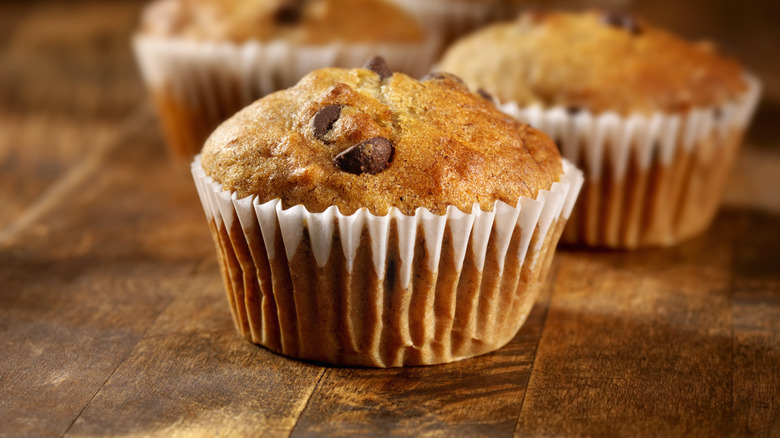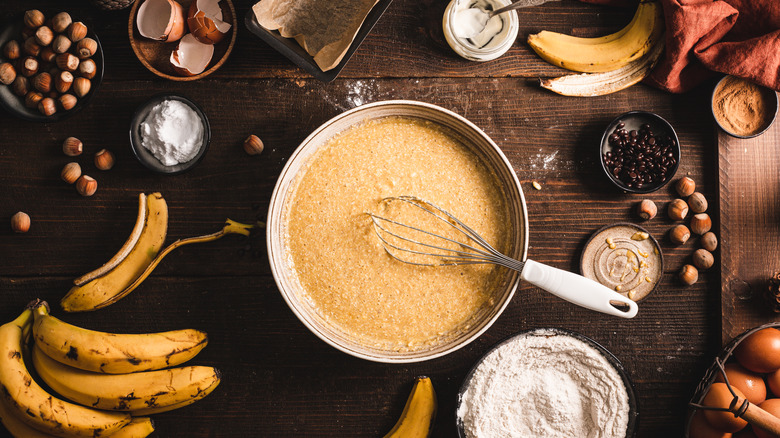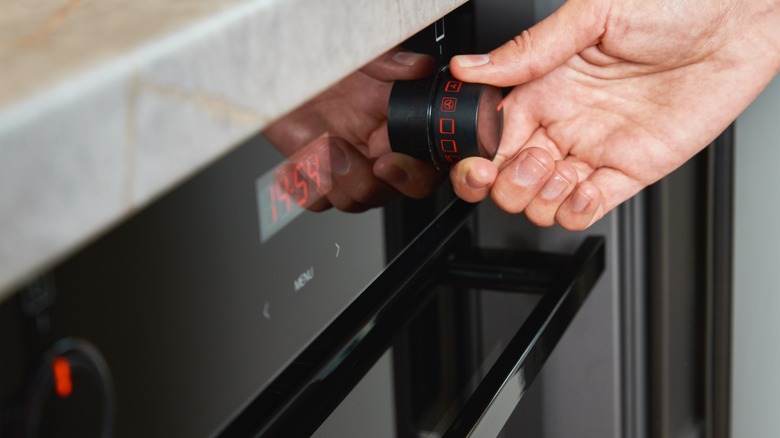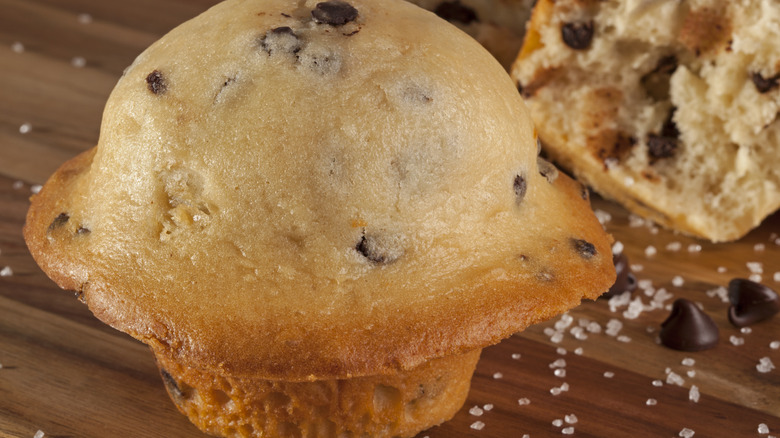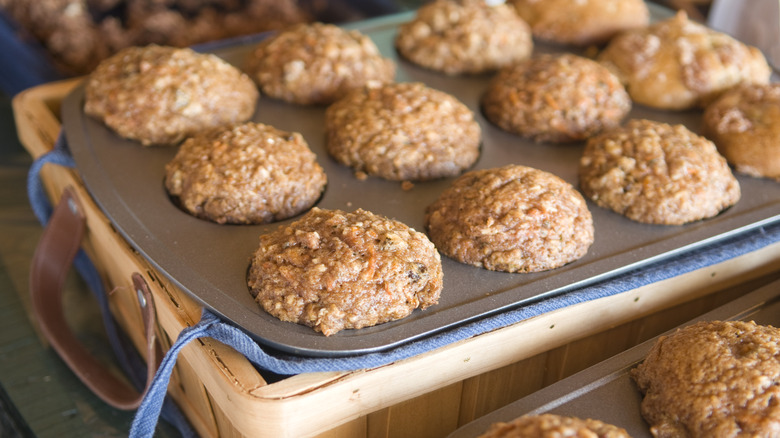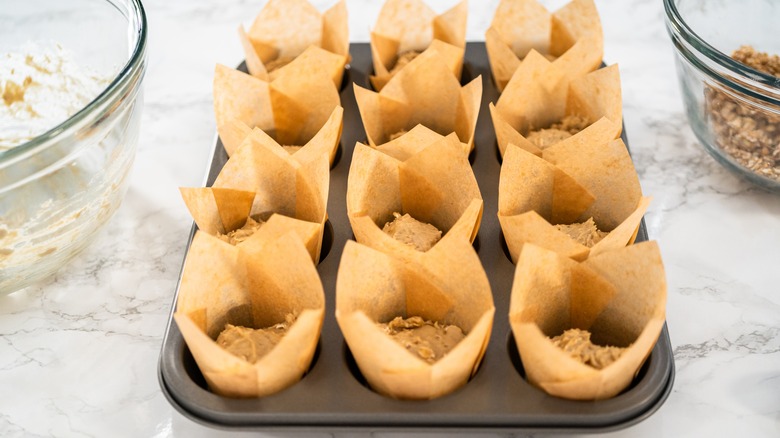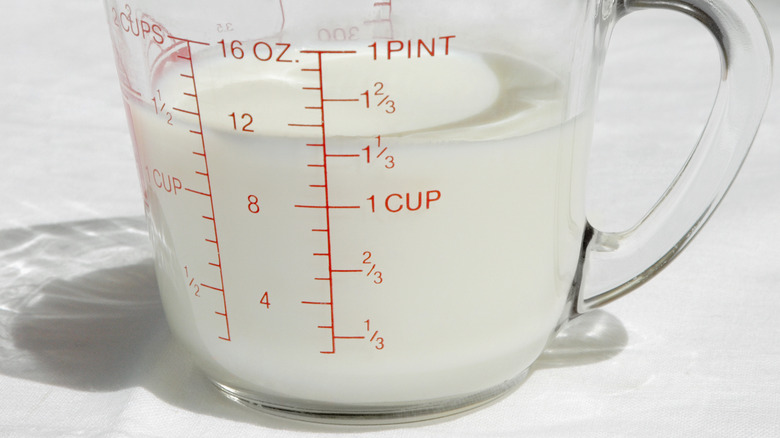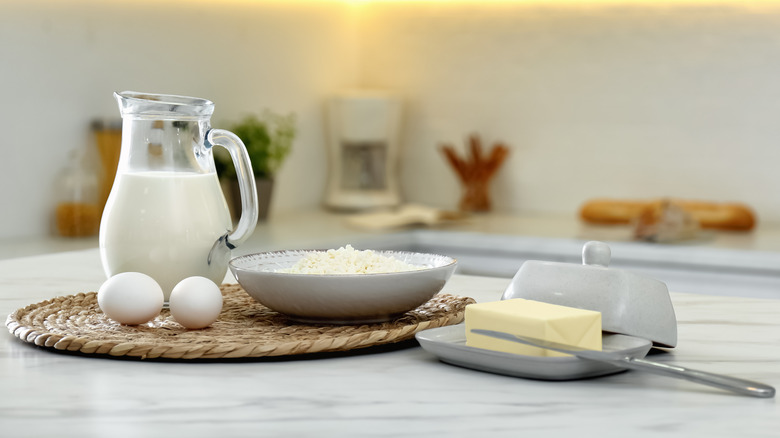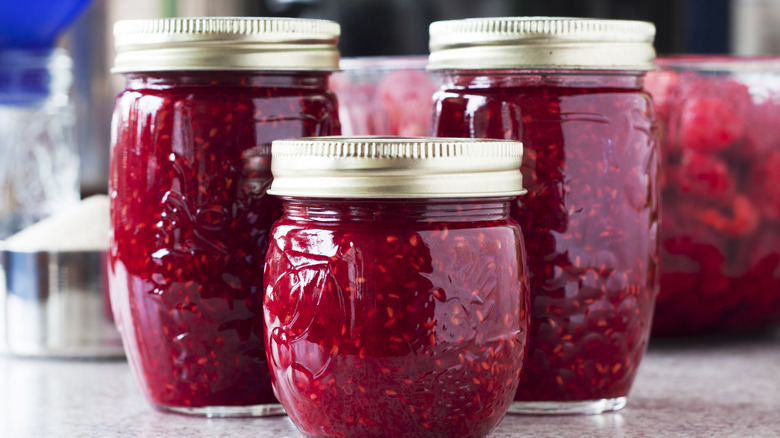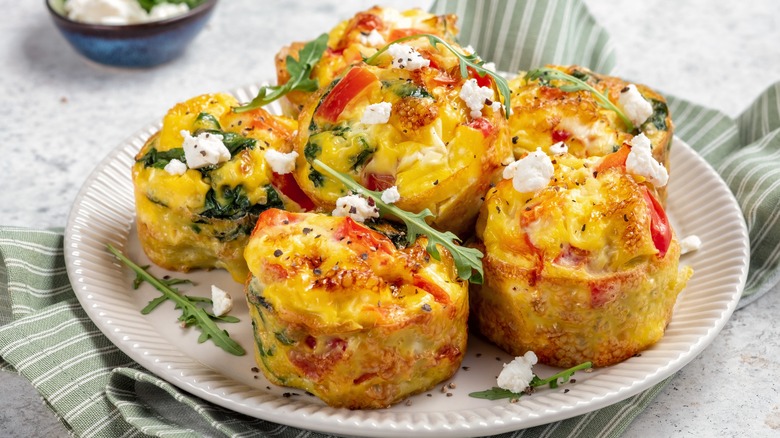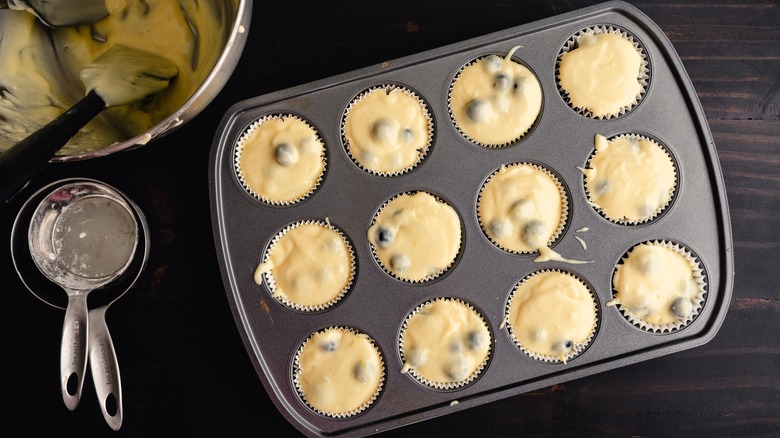12 Muffin-Making Mistakes And How To Avoid Them
Do you ever find that your muffins just aren't as spectacular as you hoped they would be? Sure, they're simple to whip up and don't require many ingredients (especially if you use a muffin mix), but just one little mistake can leave you with muffins that are flat, rubbery, or just not very tasty. Trust me, I know!
Making muffins, like everything else in baking, is both an art and a science. There are a lot of things to keep in mind when you're making muffins, and it's easy to overlook something crucial. Things like the oven temperature, the amount of batter you put in the muffin cups, and even how much you stir the batter can all affect your muffins in ways you may not have expected.
Not to worry, though: I've kept track of all the mistakes I and others have made while making muffins, both from scratch and from a mix so that we can all learn from them and create a better world, or at least just some better muffins.
1. Mistake: over-mixing the batter
If your muffins ever come out of the oven with pointy tops, tough exteriors, or unevenly cooked, under-baked middles, there's a good chance that you over-mixed your muffin batter. Unlike with cakes and cupcakes, muffins only require a light mixing — as in, if you don't see any lumps at all, you've overdone it.
Whether you're making muffins from scratch or from a mix, you should only mix the batter until the ingredients come together and you can't see any more dry flour bits. There's no need for it to be perfectly smooth — in fact, smooth muffin batter usually makes for some tough, gummy muffins. This is why it is best to mix your batter by hand with a fork or a spoon and never with a mixer.
But why, you ask? Because muffins are a "quick bread," a group that also includes biscuits and pancakes. This type of baked good requires all the ingredients to be mixed together quickly, as the name implies, in order for them to rise properly. If you mix them too much, too much gluten forms, which makes for a chewy texture instead of the light, fluffy one we're looking for.
2. Mistake: not preheating the oven
If you read your cookbook carefully, you will notice that most recipes include a line that goes something like "Preheat your oven to 375 degrees Fahrenheit." While some less experienced bakers will be tempted to skip this step, this could be a fatal mistake for your muffins.
Muffins are typically baked at around 375 degrees Fahrenheit, and the oven needs to be at that temperature (or whatever temperature the recipe/box calls for) when you put the muffins in. If it isn't, your muffins miss out on the big burst of hot air that they need in order to grow tall and fluffy.
Some bakers recommend starting the oven off at a whopping 425 degrees Fahrenheit to really kick things up a notch. Starting at such a high temperature creates even more steam inside the muffins, which will compel them to rise quickly to skyscraper heights. If the recipe or box says that the muffins should be cooked at a lower temperature, you can keep it at 425 degrees for just four to five minutes, then lower it to the required temperature (without opening the oven) for the rest of the cooking time. This works especially well with box mixes, which don't tend to rise as high on their own.
3. Mistake: filling the muffin cups too much
This one is a biggie, literally. Have you ever walked away from the oven while making muffins, only to come back later and find that they have turned into monsters? A tall muffin is good, but in this case, we're talking about muffins with enormous, bubbly tops that spill out everywhere like The Blob terrorizing a city. Since you most likely didn't grease the top of the muffin pan, this can cause stuck-on, burnt-on messes that will be even harder to remove than your poor, mangled, mutant muffins.
It is important to leave space for muffins to rise. If you fill the muffin cups too full, the batter will spread too much when the muffins start to grow, and the cups will overflow. Even if they manage to keep their shape, the resulting muffins will have narrow bottoms and big, pancake- or mushroom-like tops, which is not really ideal for serving to company.
If you want to avoid creating something from a science fiction movie, just fill your muffin cups around three-quarters full. This will ensure that they have enough space to grow and will make them look pretty, uniform, and not at all scary.
4. Mistake: leaving the muffins in the pan too long
Another common mistake that muffin-bakers make is leaving the muffins in the pan too long. If you are used to baking cookies, you might tend to leave things in the pan for a few minutes after you take them out of the oven to ensure a solid, crisp bottom. Unfortunately, this doesn't work with muffins.
Leaving muffins in the pan longer than a minute or two can lead to hard or even burnt bottoms, which makes for an unpleasant texture. This is because the muffins continue to bake when you take them out of the oven since the pan they are in is still hot. The best thing you can do for your muffins is to remove them immediately to start the cooling process.
However, there is a caveat to this. Some people remove the muffins right away and place them on a plate or the counter, but this is a mistake, too. This way, the various parts of the muffin don't cool equally, and the bottoms get soggy. For perfect muffins, you will want to use a cooling rack so that the heat can escape and they can get air from all sides and angles.
5. Mistake: not preparing the pan properly
First things first: What color is your muffin pan? This may seem like an odd question, but it is actually very important! If you use a dark-colored pan, your muffins will come out with a tough, rubbery texture and an unappealing crust. The same is true if you use a non-stick pan. These types of pans are usually really efficient for spreading heat, but in the case of muffins, this leads to brown, overcooked sides and bottoms. Instead, you should opt for a light-colored pan, which doesn't conduct as much heat and will lead to more even cooking.
Regardless of the pan you use, however, it is a good idea to use paper muffin or cupcake cups when you're baking muffins. Otherwise, the muffins will stick to the pan and be extremely difficult to remove even if the pan is purported to be non-stick. (Don't believe me? I have the ruined pan to prove it.) So, if you want to muffins that have bottoms and a pan that you can use again in the near future, it is best to protect them both with a liner.
6. Mistake: using milk instead of water in store-bought mixes
Admit it: Many store-bought oven mixes can use some spicing up. They can be a bit bland or a bit chewy or even just a bit boring. So, naturally, you might go online and try to find some ways to improve your store-bought muffin mixes. And, you might find some baking blogger telling you to swap out the water in the recipe for milk. And to this we say: Not so fast!
Sometimes, the muffin mix will call for milk, and that's great. But if the muffin mix calls for water, it's because it needs water, specifically. As odd as it may sound, milk tends to make batter too moist, and the muffins won't cook correctly. So, ironically, milk makes the batter wetter than water, which may cause problems with texture and make your muffins stick to their liners.
Milk can work perfectly fine in a made-from-scratch muffin recipe that calls for it, but this is because the milk's properties were taken into account when the recipe was being written. A boxed muffin mix, on the other hand, already contains most of the ingredients it needs, and if you add something unexpected instead of water, it can throw off the chemical reactions that take place while the muffins bake, and they won't bake well.
7. Mistake: using ingredients that are too cold
Unlike with biscuits, another poplar quick bread recipe, the ingredients in muffins should be at room temperature when you start mixing up the batter. This includes, but is not limited to, milk, butter, and eggs. These things should be taken out of the refrigerator ahead of time so that they have time to warm up.
But why bother, if they will warm up in the oven, right? It's not that simple. Warm ingredients blend together better than cold ones, which makes for a more homogeneous batter and an airier, fluffier muffin. The chemical process behind this is called emulsification. Emulsification is when particles of water and particles of fat come together — something which normally doesn't occur because these two things usually repel one another. When they come together like this, thanks to the room-temperature ingredients, it makes for a more uniform batter.
Emulsification also helps to make your muffins lighter and rise higher because it adds little pockets of air to the batter, which makes it grow in the oven later. If you start with cold ingredients, this process doesn't take place, or takes place incorrectly, which gives you a muffin with an unpleasant, overly dense texture.
8. Mistake: sinking chocolate chips and fruit
Have you ever added some chocolate chips to your muffin mix, only to have them all sink to the bottom of the muffin cups? Sure, the muffins still taste good (the chocolate chips are still there, after all), but it doesn't look as aesthetically pleasing as it could, plus the chips aren't evenly divided when you take a bite.
To avoid sinking ships of chocolate chips, fruit pieces, or nuts, coat your add-ins in a thin layer of flour before adding them in. This will create a small barrier that keeps them suspended in the batter during the cooking process.
If you still find that you aren't having much luck keeping your chips and chunks afloat, try using smaller chocolate chips or chop your fruit and nuts into smaller pieces before adding them. The problem here is gravity, and if your pieces are lighter, they are less likely to be pulled down under the tide of batter.
9. Mistake: using jelly instead of jam for filling
Muffins can sometimes be on the dry side or can just be a bit plain, so adding a fruit filling could be a great way to make a juicier, more interesting snack! Be careful, though, as this is a step that many home cooks get wrong.
Adding a jam filling can give your muffins a refreshing pop of added flavor, but adding jelly can ruin both their looks and their taste. "But wait," you say, "aren't jam and jelly the same thing?" Not quite.
Jelly is more liquid than jam and should not be used in muffins. It contains more moisture, which leaks out into the batter and messes up the equilibrium of the ingredients, resulting in muffins that won't cook evenly. It also tends to bleed into the rest of the muffin, which doesn't look very nice when you bite into it.
Jam, on the other hand, is drier and stays in place, making it the perfect filling for your muffins. To add it, simply put half the batter into your muffin cups, then place a dollop of jam on top. Then, simply add the rest of the batter to fill the cups three-quarters full and bake as usual.
10. Mistake: thinking muffins can only be sweet
Muffins are a delicious treat for dessert, breakfast, or any time you want a sweet little pick-me-up. But wait, that's not all!
Blueberry, lemon, banana nut, apple cinnamon, chocolate chip, and bran aren't the only kinds of muffins you can make. You can also make savory muffins you can eat for lunch or dinner or for a hearty snack that will keep you from reaching for that candy box in the afternoon. To make your muffins savory, simply take a plain muffin mix and add in things like cheese, cooked sausage, cooked bacon, ham, spinach, onions, or peppers.
Keep in mind, though, that not all ingredients are created equal. If you are adding something like fresh tomatoes, fresh mozzarella (the kind that comes suspended in water), or cooked spinach, you will need to drain the excess water or use a dried version to avoid adding too much extra moisture to your muffin mixture. Aside from this, though, feel free to have fun mixing and matching ingredients to make things like a sausage, bacon, and cheese muffin or a bell pepper and onion muffin. The possibilities truly are endless.
11. Mistake: using store-bought muffin mix as-is
There is nothing more convenient than a muffin mix. Unlike muffins made from scratch, you can whip up a muffin mix at a moment's notice without all that ingredient measuring and weighing. The only drawback is that sometimes store-bought mixes can lead to less tasty muffins than the ones you would make on your own.
But what if I told you that you could have it all? You can get the convenience of a muffin mix and the artful tastiness of a homemade or bakery-bought muffin using just a few extra ingredients you already have in your cabinet.
Some ideas for improving store-bought muffin mixes include adding ingredients like chocolate chips or nuts to not-nutty-enough banana nut muffins or tossing some fresh or frozen strawberries, raspberries, or cherries into your blueberry muffins to turn them into mixed berry muffins. You can also add fillings like Nutella to chocolate chip muffins or fruit curd to lemon muffins for a bit of added zing. Cinnamon and sugar can spice up pumpkin muffins too, and adding a teaspoon of vanilla extract to any flavor of muffin will bring out the taste of the other ingredients and really make it taste gourmet.
12. Mistake: not checking if your muffins are done before taking them out
Every recipe and every muffin mix package has a cooking time listed. It seems so simple: All you have to do is put the muffins in the oven and take them out after that time has elapsed. Easy peasy. Well, not quite.
Not every batch of muffins is the same, and factors like the temperature in the room, the steadiness of the temperature in the oven, and the amount of moisture in the batter can add to or subtract from the required cooking time. You should always check your muffins as they cook to make sure they are not getting done early, but even if the muffins have been in the oven for as long as the recipe suggests, you can't just take it on faith that they are cooked all the way through. This is a recommended time, not a time set in stone.
To avoid undercooked muffins with gooey centers, you need to check that they are done. The best, most common way to do this is to poke a toothpick into the center of a muffin or two (or three). If the toothpick comes out clean, the muffins are done. If it comes out with a bit of batter on it, they need more time.
